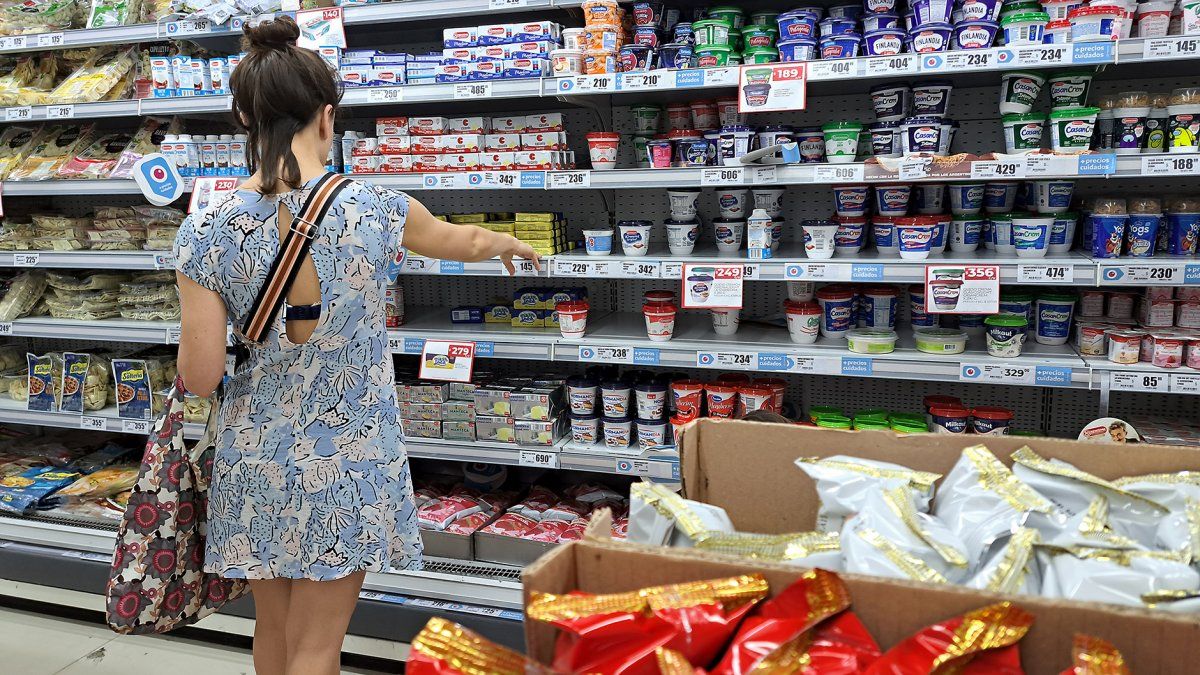At this point it is worth clarifying that annual inflation narrates the behavior of prices during the last 12 months. However, the general rate of inflation a year ago is far from being similar to the current one (5% monthly average in the first quarter of 2022 vs. 7% for the same period in 2023).
For this reason, calculations such as annualizing the monthly variation rates are frequently used, in order to know what inflation would be after one year if current inflation levels persist.
This gives an approximation of the magnitude of one of the main problems facing the Argentine economy, which afflicts, above all, low-income households, who do not have the means to protect themselves from price increases, since they allocate the most of their income to subsistence.
The main annualized increases of the last year
March inflation was 7.7% per month, the highest rise since April 2002. Likewise, annual inflation reached 104.3%, remaining for the second consecutive month in triple digits for the first time since October 1991, when the country came out of hyperinflation. In any case, the average of the price increases does not give a clear picture of which products increased more or less than this number, and which are the most representative of day-to-day consumption.
The basic food basket, meanwhile, increased 120.1% annually and the total basic basket grew 113.2%, both above inflation. The CBA, which delimits the indigence line, contains mainly basic necessities (food), while the CBT consists of an estimate of the cost of basic products in general and demarcates the poverty line. For an individual not to be indigent, 28,388 pesos were required in March, while to not be poor, 61,866 pesos were needed. For a typical family of four members, the indigence and poverty lines were around 88,000 and 191,000 pesos, respectively.
Of the products expressed as part of the basic food basket, there were strong increases in March, such as fruits and vegetables, sugar (198.2%), oil (186%), noodles (152.9%), eggs ( 152.8%), beer (146.9%) and wine (133.2%). There were increases in line with general inflation in dairy products, soft drinks, cookies, cold cuts and sausages, and white meats. Butter, cheese, and yerba mate grew below inflation, and red meat in particular much less – around 87% annually, against a general level of over 100%.
Between March 2022 and March 2023, the item with the highest increase was restaurants and hotels, rising 121.4% per year, although the items of clothing and footwear (118.8% per year) and alcoholic beverages and tobacco also showed increases in the same range. (113.4% annual). Note that the first two are closely correlated with the domestic market, which may be influenced by a high free (parallel) exchange rate that discourages saving and stimulates current consumption.
Instead, The item with the lowest increase in annual terms was communications (belonging to the segment of regulated products), which grew by 76.5% compared to the same month in 2022. In greater detail, the sub-item with the lowest increase was telecommunications services (73.9% annually). .
Looking at specific products, the maximum increase was in the kilo of oranges, which grew 422.2% against the same month last year. Other high increases were observed in the kilo of sweet potato (374.1%), potato (267.2%), lettuce (239.1%) and pumpkin (213.5%). On the other hand, the kilo of apple increased by 171.1%, and that of onion by 170.8%. All seasonal products. Other goods with high increases, higher than 150% per year, were the kilo of sugar, sunflower oil, diapers, dozen eggs, hamburgers, and powdered soap. Increases were observed one notch lower, but still higher than average inflation, in wine and beer, soft drinks, salt, dairy products, flour, cookies, cold cuts and sausages, and chicken.
As opposed, the lowest increase occurred in canned tomatoes (73.2% annually), and other products with values below annual inflation were cuts of meat, bread, butter, cheese, yerba mate, mineral water, and hygiene products staff. Meat cuts, on average, grew 15 points below general inflation, unlike the accelerated pace they took the previous year.
inflation.JPG
Source: Ambito




